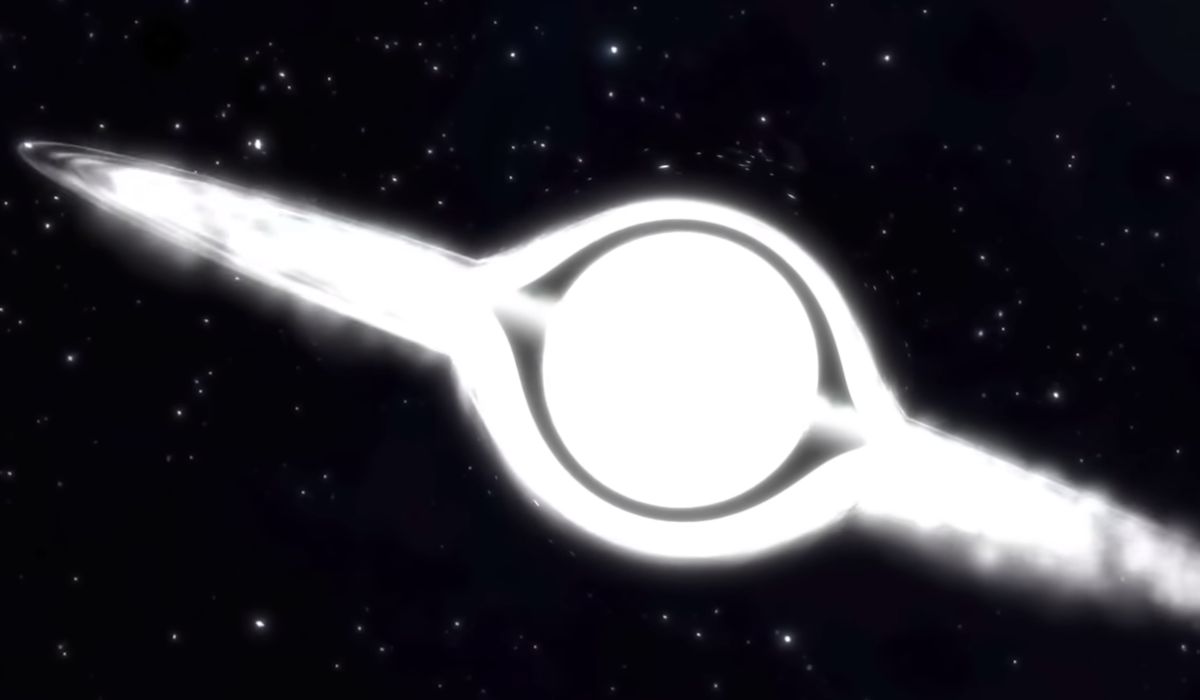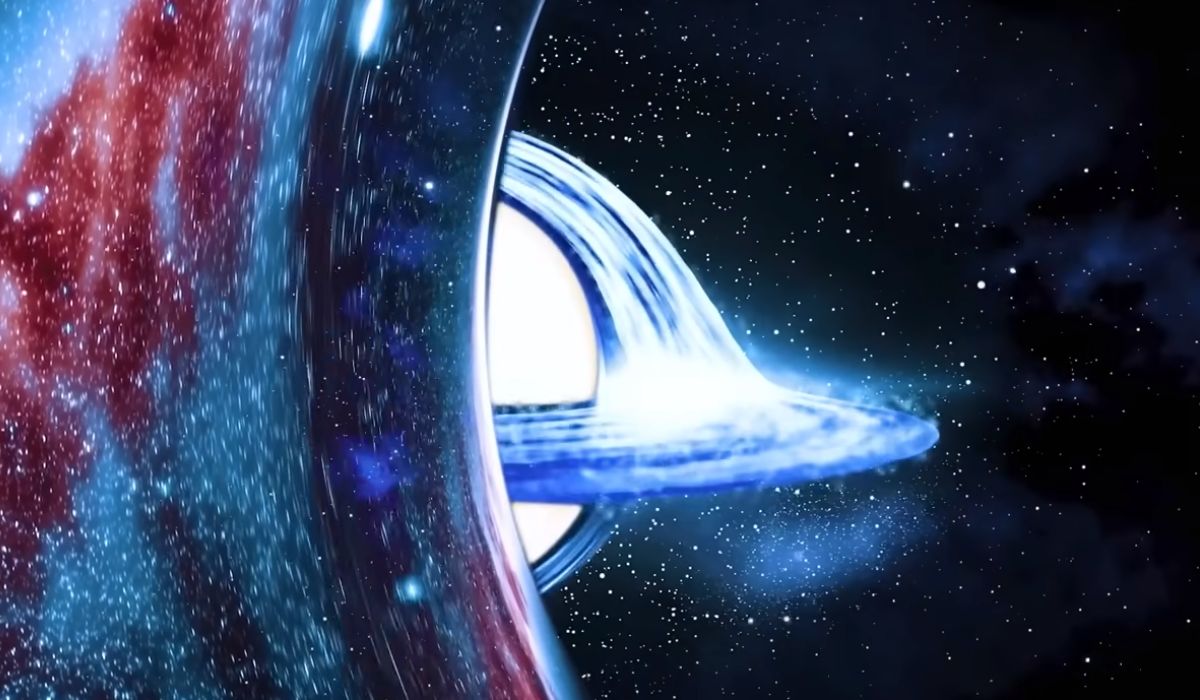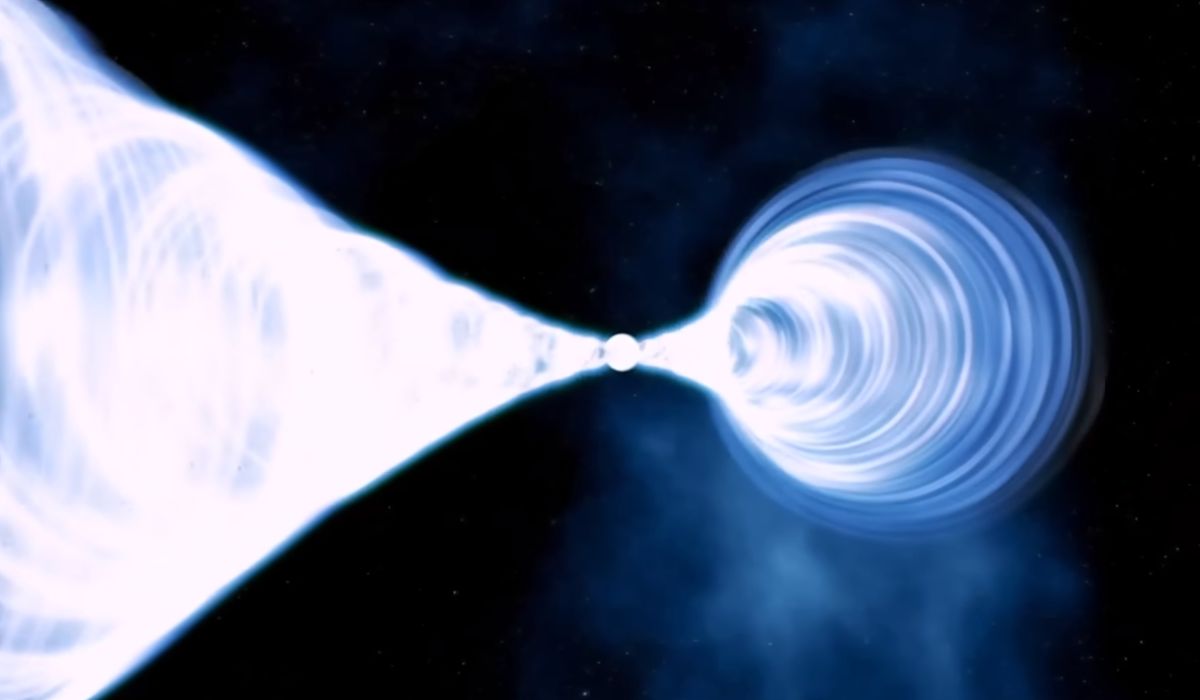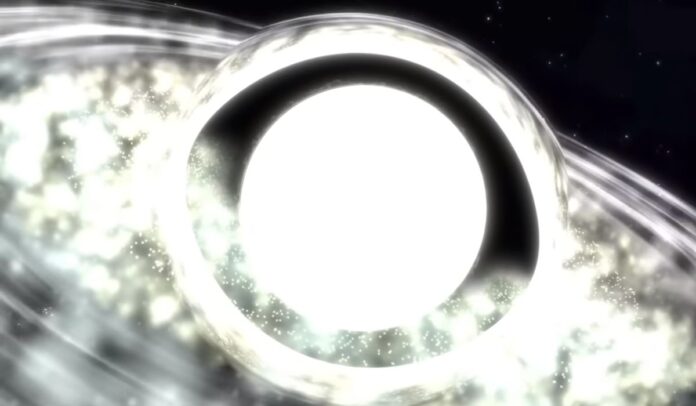Black holes often steal the spotlight, but have you ever heard of their intriguing counterparts, white holes? Let’s dive into this cosmic mystery.
When we talk about black holes, we’re discussing vast, hungry regions in space where gravity has gone into overdrive, pulling everything, including light, into an infinitely small point called a singularity. Picture an event horizon as a “point of no return” surrounding this singularity. It’s not a solid wall or barrier but a zone where gravity’s pull is just too powerful for anything to break free.

So, how do black holes come into being? Well, think of a star much more massive than our sun reaching the end of its life. When this giant star exhausts its fuel, it collapses inwards with such force that a black hole is born. And once you get too close to a black hole, you’re basically in its grasp forever, spiraling towards the center.
Read More: Spaceship Neptune
Now, as for white holes, the jury is still out on their existence. While they’re fascinating theoretical opposites of black holes, where everything is expelled out instead of being sucked in, evidence for their existence in our universe remains elusive. So, for now, black holes continue to reign supreme in our cosmic curiosities.
Black holes are a fascinating topic in Einstein’s theory of general relativity, but have you ever wondered about their curious counterparts, white holes?

Einstein’s general relativity is all about how massive objects warp space and time. An interesting thing about this theory is that it doesn’t have a preferred direction for time. Imagine if we played a film of a black hole forming, but in reverse. Instead of everything being sucked in, you’d see an object spewing out radiation and particles, and ultimately, exploding into a massive star. This “backwards” black hole is what we call a white hole. The math behind general relativity says they’re possible!

If they existed, white holes would be truly bizarre. Imagine a celestial object, not swallowing everything like a black hole, but expelling it faster than light! It’d glow white, hence the name. Interestingly, while you can fall into a black hole (though not recommended), with a white hole, you’d be perpetually kept out by its force.

But here’s the catch: Just because the math says they’re possible doesn’t mean they exist. Enter thermodynamics, another essential field in physics. One of its main principles is the concept of entropy. In simple terms, entropy is about disorder. The rule is: disorder in the universe tends to increase.
Read Also: Plants in Moon Soil
Picture it this way: If you toss a piano into a machine that shreds it, you get a pile of chaotic debris. That’s increasing disorder, and it’s totally okay according to thermodynamics. But if you put random bits into the shredder and expect a piano to pop out, you’re out of luck. That’d mean order has magically increased. So, while playing the “black hole movie” in reverse seems fun, thermodynamics isn’t on board with the idea. Creating a star from an explosion would mean decreasing entropy, which is a no-go.

The intriguing concept of white holes suggests that if they ever existed, they might have been born at the very beginning of the universe. In this case, the whole entropy problem might be bypassed because the white hole would’ve always been there. It’s a tantalizing thought, but for now, white holes remain a brilliant product of mathematics rather than a reality we can observe.
White holes are such a captivating concept. Think of them as the opposite of black holes. While black holes pull everything in, white holes would theoretically push everything away. But there’s a twist: they would be incredibly fragile.

Imagine a white hole pulling stuff towards it. Yet, bizarrely, nothing could actually get inside. Even if a single light particle (or photon) tried to get close, it would be stuck outside. This interaction would pump up the energy of the whole system massively. Over time, that tiny particle would amass so much energy that the white hole couldn’t handle it and would suddenly collapse, turning into a black hole. So, the life of a white hole, if it existed, would be pretty short-lived.
While white holes are fascinating to think about, it seems they’re more a product of wild mathematical imagination than an actual feature in our universe. But who knows? The cosmos is vast and mysterious, and there’s always more to discover!














![Technical Aspects of 844 Area Code in 2024 [Detail Guide] 844 Area Code](https://articleify.com/wp-content/uploads/2024/01/844-Area-Code-150x150.jpg)














